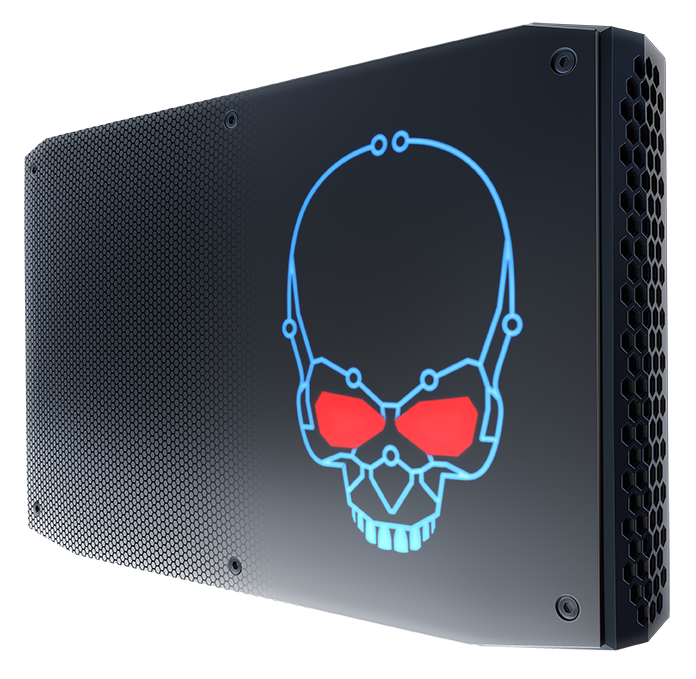Intel's new NUC will show off AMD's Vega GPU
Intel claims it's the smallest-ever VR-capable computer.
We've called Intel's NUC "the future of tiny desktops." That's truer than ever with the newest version of the device, which is powered by the company's new eighth-generation CPU with AMD RX Vega M graphics. In fact, it features the fastest version of that chip, making it an even better desktop replacement. Intel claims it's so powerful, the 1.3 liter NUC is the smallest VR-ready system so far. And based on its specifications, we're inclined to believe them.
The new NUC, codenamed "Hades Canyon," is a bit thicker and taller than the "Skull Canyon" version we saw in 2016. It comes in two versions: the most powerful includes a Core i7-8809G chip with powerful RX Vega M GH graphics, running at speeds between 3.1GHz and 4.2GHz. The other model is still pretty capable, with an i7-8705G chip, a clock speed between 3.1GHz and 4.1GHz and slightly slower RX Vega GL graphics.
Based on what we've seen from Intel's benchmarks, the faster NUC should be speedy enough for most VR experiences (though complex games like Doom VFR might be a challenge). Overall, you should expect to see at least 60 FPS with modern games in 1080p. While the company tried position the last NUC as a gaming-oriented machine, this one actually has the potential to be a solid gaming PC for your living room.
Intel also packed in a bevy of ports to make this NUC much more useful to enthusiasts. Along its back panel, it sports two Thunderbolt 3 USB-C ports, two gigabit Ethernet connections, two Mini DisplayPorts, four USB 3.1 Type-A sockets, HDMI and a hybrid 3.5mm/optical audio jack. Up front, it has USB-C, USB Type-A, USB Type-A for charging, HDMI, a headphone jack and an SDXC slot. That might sound exhausting, but that doesn't even include the internal USB connections and dual M.2 SSD slots.
As usual, Intel will sell the NUC as a DIY kit. You'll have to supply your own storage, RAM and accessories to get it up and running. Unfortunately, we don't have pricing details yet, but Intel says the product will be available this spring.
Click here to catch up on the latest news from CES 2018.





